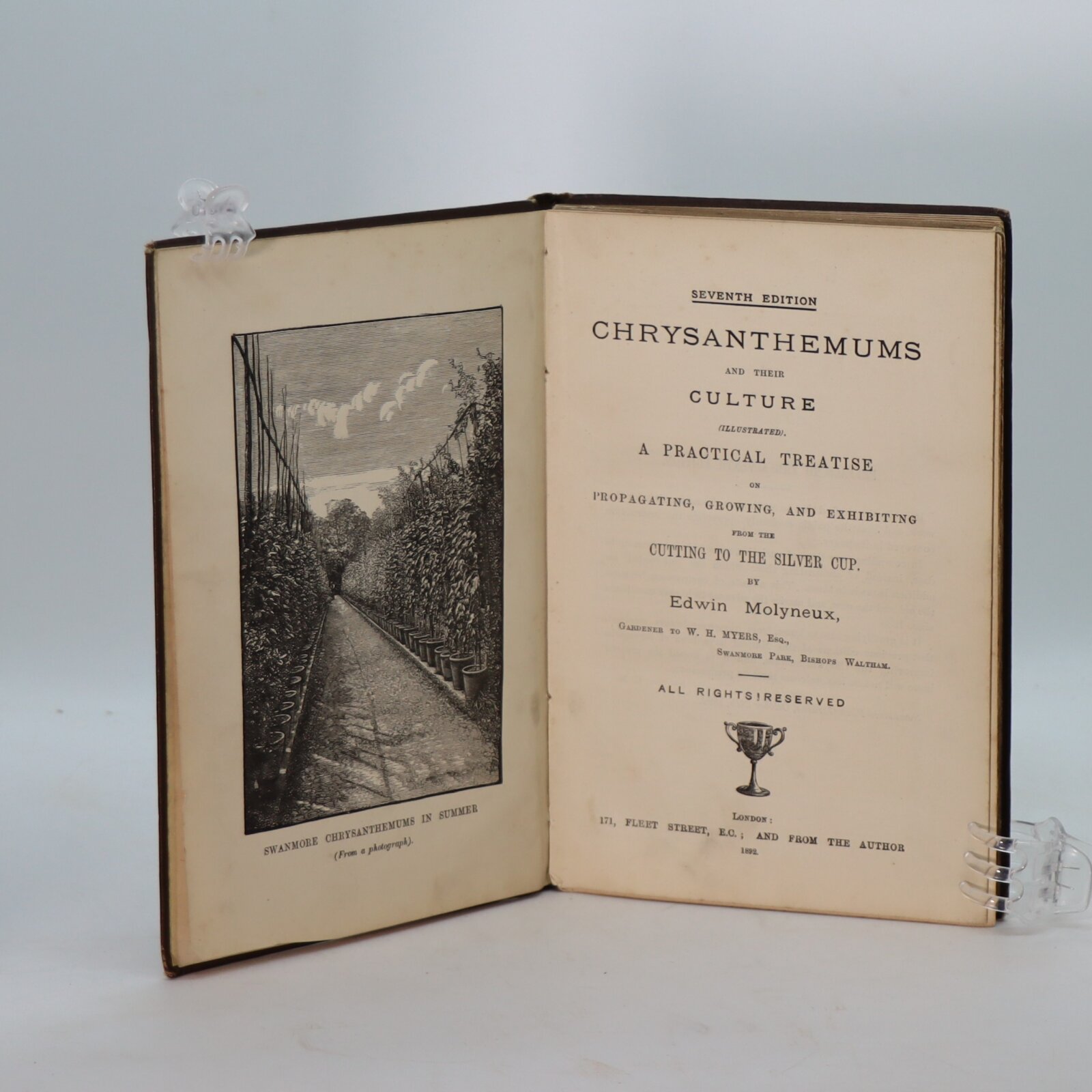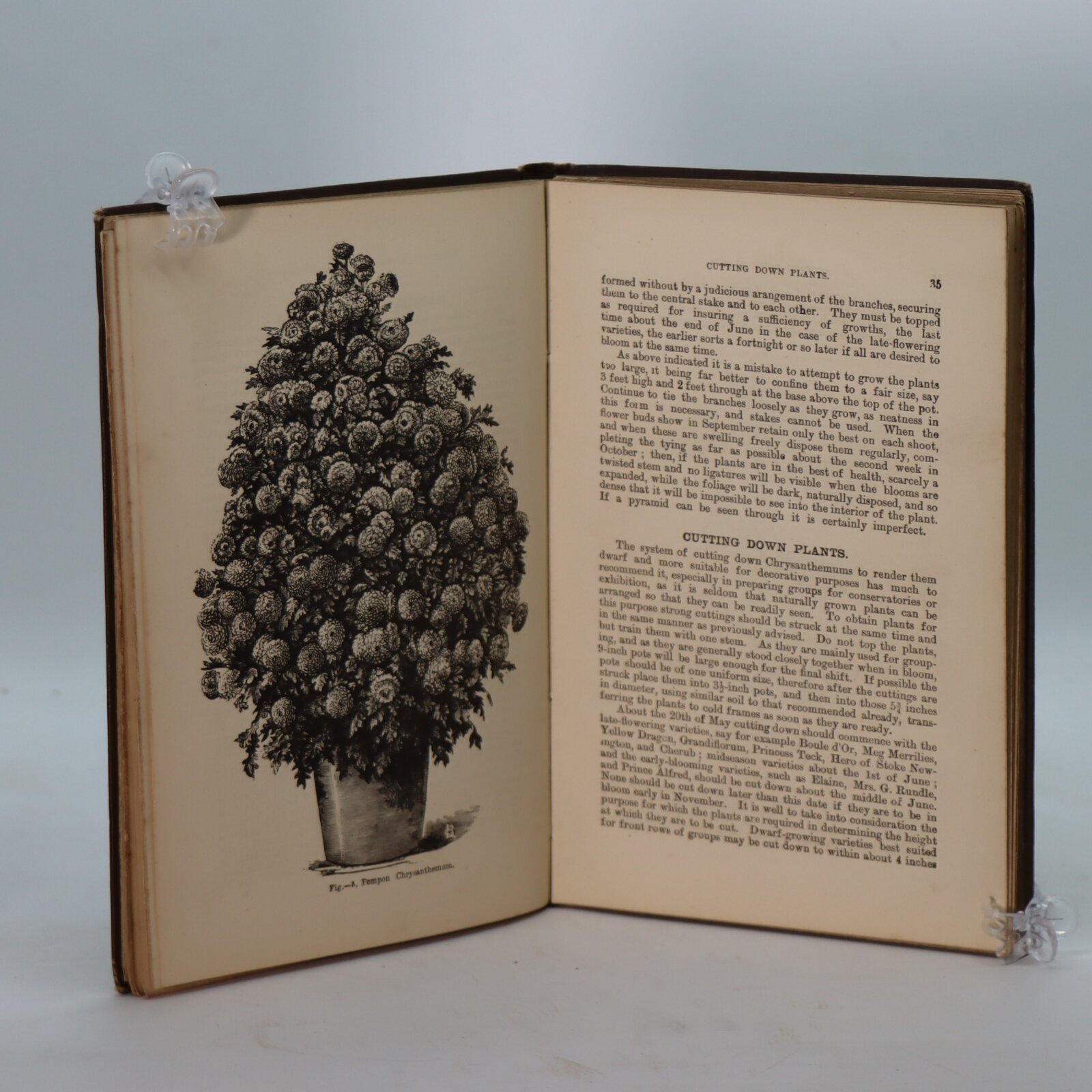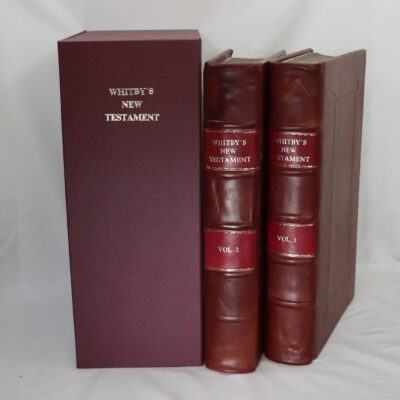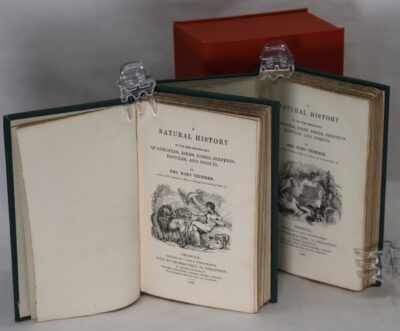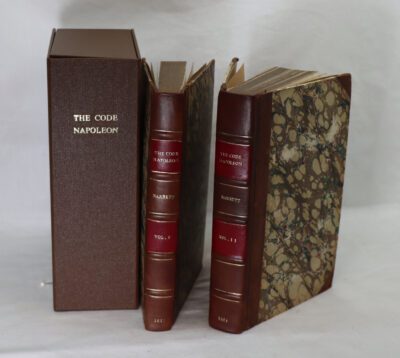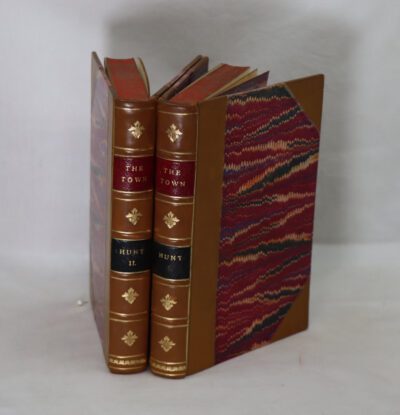Chrysanthemums and their Culture.
By Edwin Molyneux
Printed: 1892
Publisher: Edwin Molyneux.
Edition: Seventh edition
| Dimensions | 13 × 19 × 1.5 cm |
|---|---|
| Language |
Language: English
Size (cminches): 13 x 19 x 1.5
Condition: Fine (See explanation of ratings)
Your items
Item information
Description
Brown cloth binding with gilt titles on the spine and front board.
F.B.A. provides an in-depth photographic presentation of this item to stimulate your feel and touch. More traditional book descriptions are immediately available.
A very clean book
Chrysanthemums and Their Culture a Practical Treatise on Propagating, Growing and Exhibiting, From the Cutting to the Silver Cup by Edwin Molyneux
Early name, Suanmere , assumed to mean ‘swans pool’ – of the Bishop of Winchester. The Milne map, 1791, shows house belonging to A Bettesworth. His niece, who married Alexander Shearer, inherited and it was their son, Bettesworth Pitt Shearer who developed the house and grounds in the 1830s. The 1” OS survey map shows the house alongside a public road with a small rectangular garden running W-E from the house. The Greenwood map, 1826, reveals that the road has been realigned to the north leaving the original road as the southern approach road and a new approach road created to the north. The park has also been extended. The Tithe map, 1841, shows two lodges on each approach road and the house and grounds are now 59 acres. By 1868, the grounds have been extended further and formal pleasure gardens have been created to the north of the house. There was much tree planting in the park. Bettesworth Shearer lost two wives and by 1875 moved away to East Molesey, the estate being bought by Charles Myers, a director of the White Star Shipping Line, Liverpool. He had the house demolished and brought in Sir Alfred Waterhouse to design a large, neo-Tudor building. He also brought in Edwin Molyneux whom he had probably known in Liverpool to redesign the gardens. A large walled garden with elaborate glasshouses was built and the whole gardens redesigned. Myers died suddenly in 1879 leaving his estate to his son, William Henry Myers who through Molyneux carried on with the creation of impressive grounds.
Due to the skills of Molyneux as a plantsman, in particular in growing prize chrysanthemums, Swanmore Park gained a reputation for the quality and maturity of its planting and was written about in several garden magazines of the time, such as the Gardeners’ Chronicle, the Journal of Horticulture and Cottage Gardener, Gardening World and Country Life. A rock garden of pulhamite was created by James Pulham & Sons, with water, many alpines and two bridges and the glasshouses were developed and extensively used for vines, fruit and exotic plants. There was an orchard, a winter tennis court, a ha-ha, many climbing roses and other plants along a pergola, ½ m trees with some specimens planted in the parkland, the house covered with colourful climbers and two acres of grassland planted with limes, elms, Spanish chestnut with 1000s of bulbs in the grass. A sun dial is moved round the grounds. There was an avenue of cupressus and sweet briar hedges. Molyneux moved to be Farm Bailiff around 1898 and Mr G Ellwood became the head gardener. A conifer, Chamaecyparis lawsonia ‘Elwoodii’ originating as a seedling, was named after him.
William Myers died in 1933 after which the gardens never regained their glory and after a succession of owners the estate was divided up and sold off in 1952. The cottages and land, including the walled garden were divided into lots and sold. The house and part of the gardens were sold to a developer who divided it into a number of properties.
Want to know more about this item?
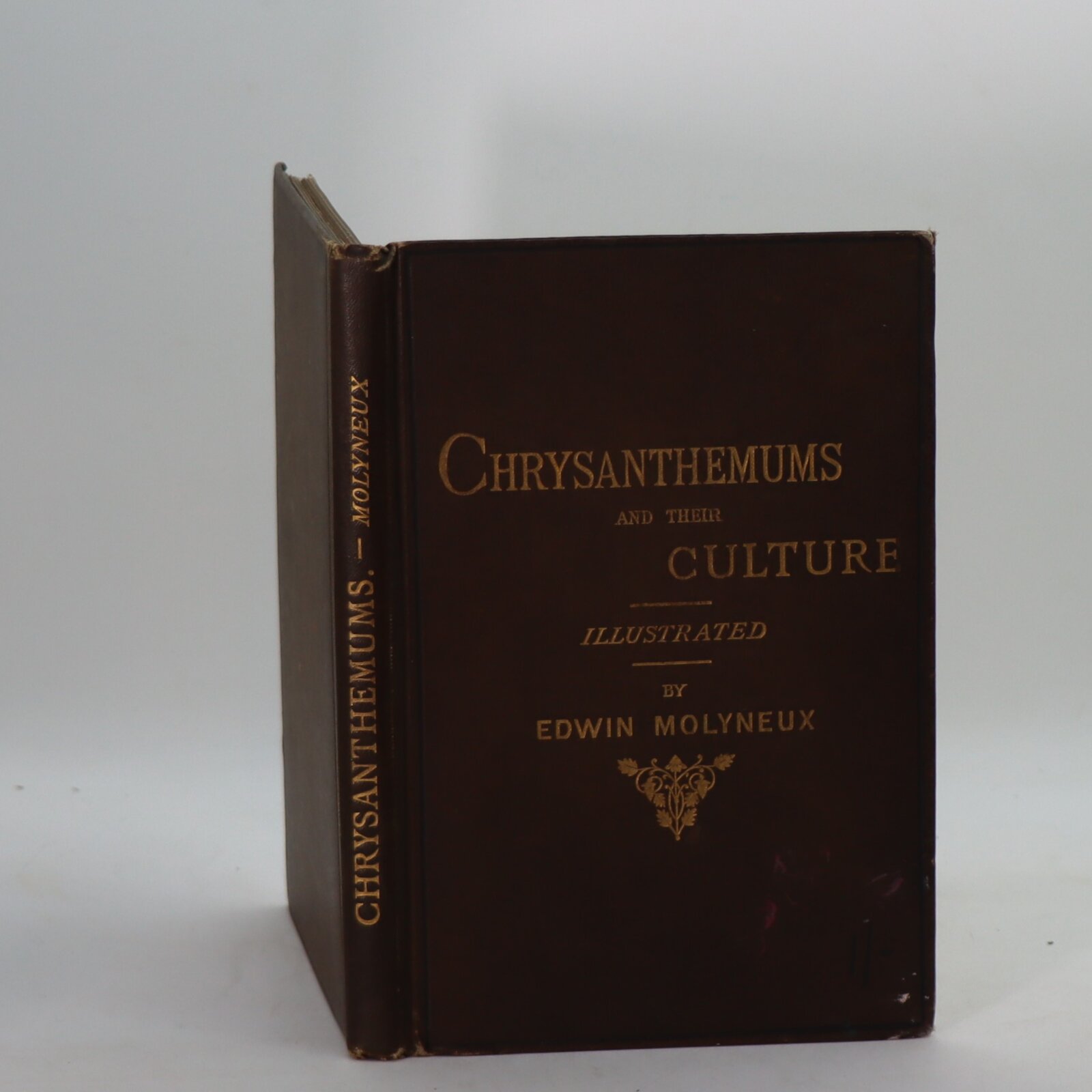
Related products
Share this Page with a friend

